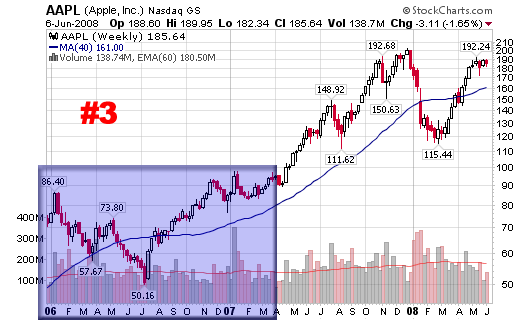I was recently asked a question by one of the most respected trader development psychologists/ mentors that I know of in the business. Brett Steenbarger, working on a new project, asked if I could elaborate on what strategies and/ or courses of action I take to mentor/ coach myself as a trader. Brett’s excellent blog can be found at Traderfeed. He specifically asked:
What are the three things (i.e. courses of action, strategies, resources) that you’ve found most helpful in mentoring/coaching yourself as a trader?
And here is how I answered:
- 1. Understand me. The most powerful tool I have found in life and in this specific case, the market, is what I, as a person, am capable of doing as a trader. I finally understand that personal characteristics that are engrained in my DNA will only allow me to trade successfully under specific circumstances. For example, I am much more consistent and profitable as a medium term and longer term trend trader than as a day trader (even more so on the long side). I don’t need to be everything, all the time as long as I continue to focus on the areas that bring me the greatest success. Understanding “me” has been my holy grail of understanding how to trade the market with some type of consistency and profitability.
- 2. Learning to cut losses. It’s almost cliché but not many people can do it (in any aspect of life). I have learned to cut losses in my trading, my career, my hobby of competitive poker and everything else in life where the rule applies. Without this rule, there wouldn’t be a third rule.
- 3. Study and work hard. Sounds so simple but we live in a very lazy society. It is extremely important to my success for me to continuously study the markets on a fundamental and technical level and learn from my successes and mistakes. If you think about it, we would all start at square one on every trade if we didn’t learn from past situations where we succeeded or failed. Applying the knowledge gained from past experiences allows me to properly analyze similar situations in the future with slightly greater odds of success (or at least I would like to think). Never stop learning is a phrase that I will never stop saying as it proves to be truer the older I get.
P.S. – Sorry for the lack of posts over the past few weeks as I have been in and out of town without much focus on the market. It’s better for me to be mostly in cash at this point in time due to the lack of opportunities crossing my screens. Regular posting will resume as soon as my schedule allows me to focus 110% on the market. I will look to post occasionally as long as I have something of value to add.






Connect with Me